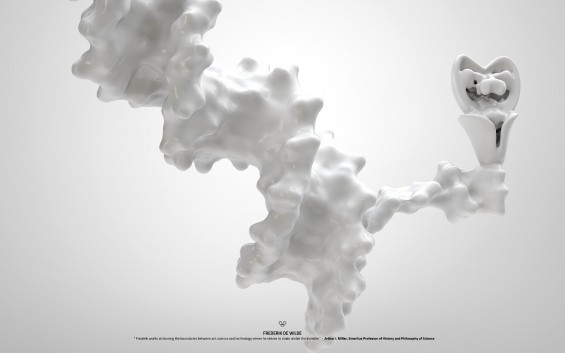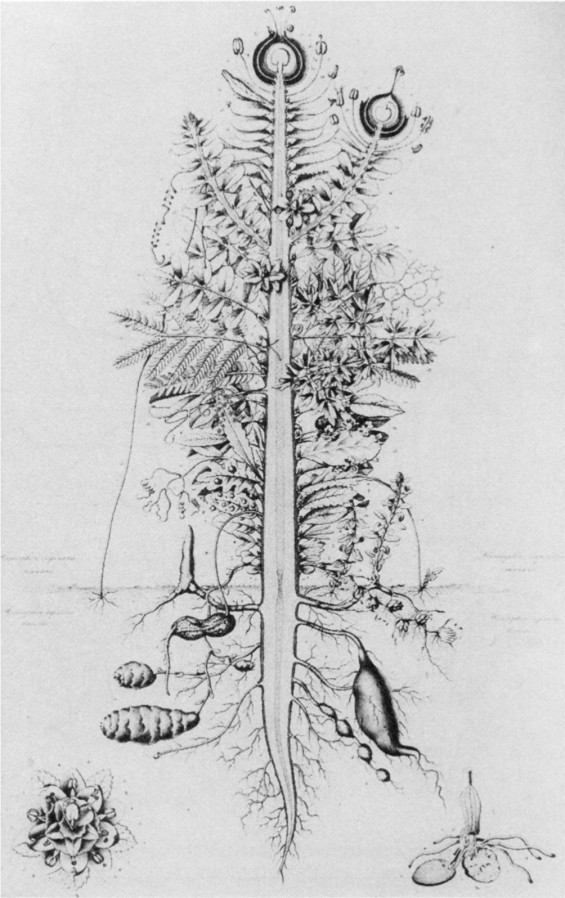UR-Pflanze 1.0
Intro
Shortly before Johann Wolfgang von Goethe published The Metamorphosis of Plants in 1790, he engaged with a series of letters with Charlotte von Stein in which he describes the Archetypal Plant, or the Urpflanze. He believed that there must be such an entity. Otherwise, he believed, how could he recognize this or that form was a plant if it were not built on a single basic model? His search for the plant took him many places–he believed that such a plant would exist on a rocky hillside in the Mediterranean. But then he realized that the archetypal plant was really Leaf, and the generative forces of a plant were really just fluctuations of the base Leaf form. Though his theories faded into obscurity, there is still an poetic quality and elegance to the idea of the Urpflanze. Anyone who watches plants grow and emerge can only wonder at their formative forces and meaning of their patterns.
De Wilde’s project aims to extend Goethe’s idea of the primordial unit to contemporary science like synthetic biology using novel design and manufacturing techniques like 3d printing. Content wise De Wilde focusses on archetypes in contemporary scientific developments, and how contemporary technologies like 3d printing for creating synthetic life are influencing our society, politics, economy etc.
Cummilingus Bivittatus forms the first part of a series inspired by the UR-pflanze idea proposed by Goethe, and represents a hypothetical reproduction system envisioned by De Wilde. Goethe described the Urpflanze (The Ur-form) as a machine of metamorphosis – a shapeshifter capable of adopting any form our imaginations can unleash. Goethe being a Romantic Idealist hoped that Morphology would Unify Science and Art. Goethe observed a pattern and deduced a structure, the leaf, the Uhrplanze. What Goethe really observed was not a Static Uhrplant but the dynamic process of the branching of all kinds of leaves in all kinds of plants (Morpho-Genesis).
◊
Image © Cummilingus Bivittatus, Frederik De Wilde
◊
UR-Pflanze 1.0
Met UR-Pflanze 1.0 toont De Wilde de eerste stappen van een nieuw cross-over project. Hij vindt zijn conceptuele basis en inspiratie bij Goethe en het concept van de ‘Oerplant’ of ‘Urpflanze’. Het centrale uitgangspunt is het onderzoek naar archetypen in de hedendaagse wetenschappelijke ontwikkelingen. Dit leidt voor de kunstenaar in een vervolgtraject tot verbindingen met hedendaagse wetenschappelijke onderzoeksvelden als synthetische biologie, genetica en astrobiologie. Voor de kunstenaar is het Urpflanze 1.0 project een reflectie op onze maatschappij en technologische vooruitgang(?). Wat is bijvoorbeeld onze positie wanneer giganten in de bioengineering industrie zoals Monsanto superzaden maakt en die uit puur winstbejag verspreidt over de wereld? De ‘Oerplant’ van Goethe is in feite ook een superplant want het bevat alle genetische materiaal van alle andere planten. Voor de kunstenaar is onze wereld reeds transnatuurlijk, alles is door de mens ‘geschonden’ en er is dus geen ‘paradijs’ meer op Aarde.


